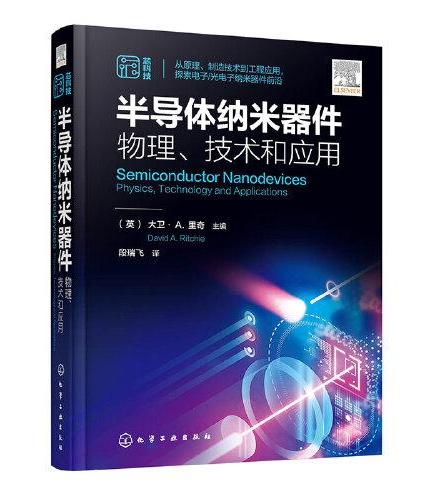新書推薦:

《
中国王朝内争实录(套装全4册):从未见过的王朝内争编著史
》
售價:HK$
250.7

《
半导体纳米器件:物理、技术和应用
》
售價:HK$
181.7

《
创客精选项目设计与制作 第2版 刘笑笑 颜志勇 严国陶
》
售價:HK$
63.3

《
佛山华家班粤菜传承 华家班59位大厨 102道粤菜 图文并茂 菜式制作视频 粤菜故事技法 佛山传统文化 广东科技
》
售價:HK$
227.7

《
武人琴音(十周年纪念版 逝去的武林系列收官之作 形意拳一门三代:尚云祥、韩伯言、韩瑜的人生故事 凸显百年武人命运)
》
售價:HK$
44.9

《
剑桥斯堪的纳维亚戏剧史(剑桥世界戏剧史译丛)
》
售價:HK$
158.7

《
禅心与箭术:过松弛而有力的生活(乔布斯精神导师、世界禅者——铃木大拙荐)
》
售價:HK$
66.1

《
先进电磁屏蔽材料——基础、性能与应用
》
售價:HK$
227.7
|
| 目錄:
|
Contents
1 Offshore Platform Topsides and Substructure 1
1.1 Platform Topsides 2
1.2 Design of Offshore Platform Topsides and Substructures 6
1.2.1 Topsides Design in General 6
1.2.2 Modular Topsides, Integrated Topsides and Single Lift Topsides 9
1.2.3 Jacket Design 21
1.3 Consideration of Construction and Integration of Topsides and Substructure 23
1.3.1 Platform Design Strongly Related to the Methodology of Platform Integration 23
1.3.2 Impact of Changing Integration Method 26
References 34
2 Platform Integration and Stationing 35
2.1 Self Installable Platform 36
2.1.1 Jack-Ups 36
2.1.2 SIP II Platform [9] 41
2.1.3 EDP [13–15] 48
2.2 Inshore Integration [16] 51
2.2.1 Inshore Topsides Integration by Heavy Lifting 54
2.2.2 Inshore Platform Integration by Floatover 58
2.2.3 Moving-in-Under [23–25] 65
2.3 Offshore Integration 71
2.3.1 Topsides Installation by HLCV [26, 27] 71
2.3.2 Offshore Topsides Installation by Floatover 76
2.3.3 Challenges and Development 82
2.4 Summary 84
References 85
3 Floatover Technology 87
3.1 Floatover Concept 87
3.2 Advantages of Floatover Method [7–10] 94
3.3 Category of Floatover Technology 98
References 99
4 HIDECK Floatover Technology 101
References 114
5 UNIDECK and SMARTLEG 115
5.1 UNIDECK Floatover 115
5.2 Comparison UNIDECK to HIDECK 116
5.3 UNIDECK Equipment and Operation 118
5.4 Advantages of UNIDECK Method Comparing
to the HIDECK Method 123
5.5 SMARTLEG Installation Method 125
5.6 Application of SMARTLEG Technology [9, 10] 127
References 129
6 Catamaran Floatover 131
6.1 Multi-vessel Floatover 131
6.2 “Catamaran Floatover” Origination 133
6.3 Catamaran Floatover Technology 137
6.3.1 General Discussion 137
6.3.2 Catamaran Floatover Categories 141
6.4 Technical Challenges 146
6.4.1 One Extra Operation Phase 146
6.4.2 Mating Operation 151
References 151
7 Project Management and Planning 153
7.1 Offshore Installation Projects 153
7.1.1 Features of T&I Projects 154
7.1.2 Project Team and Its Main Functions [5] 157
7.2 Project Management and Project Organizations 177
7.2.1 Project Management 177
7.2.2 Project Organizations and Organization Charts 178
7.3 PM Project Manager 180
7.4 PEP Project Execution Plan 182
7.5 IM Installation Manual 183
7.6 Summary Comments 188
References 189
8 Engineering Analysis and Model Test 191
8.1 Engineering Plays a Vital Role in Floatover Projects 191
8.1.1 Engineering Team on the Project 192
8.1.2 Engineers—Their Quality and Challenges 193
8.2 Categories of Engineering Work 195
8.2.1 Installation Criteria Set Up 195
8.2.2 Analysis and Simulation Supporting Operation Procedure Development 196
8.2.3 Floatover Equipment Design and Qualification 196
8.2.4 Emergency Handling 197
8.2.5 On-Site Supporting 197
8.2.6 Model Test 197
8.3 Engineering Work Quality Management 198
8.3.1 AnalysisDesign Philosophy 198
8.3.2 DB 198
8.3.3 Analysis and Design Procedures 198
8.3.4 Involvement in the Early Stage of the Project 199
8.4 Analysis and Simulation Work 199
8.4.1 Stability Analysis 199
8.4.2 Transportation Motion Simulation and Hydrodynamic Load Calculation 200
8.4.3 Topsides Transfer Simulation and Catamaran System Transportation 202
8.4.4 Floatover Simulation [2–4] 204
8.5 Structural Analyses 210
8.5.1 Global Structural Analysis 210
8.5.2 Topsides Integrity Checking 211
8.6 Design Work [5] 212
8.6.1 DSS DSF Design 212
8.6.2 LMU [6] 216
8.7 Model Test for Transportation and Floatover Operation 220
8.7.1 Main Contents of Model Test Specification 220
8.7.2 Motion Decay Test 223
8.7.3 Transportation Model Test 223
8.7.4 Pre-mating Test 224
8.7.5 Mating Test 225
8.7.6 Model Test Results and the Data Evaluation [7–9] 226
8.8 Summary 227
References 228
9 Operation Execution 229
9.1 Installation Procedures and IFC Drawings 229
9.2 Platform Integration Operation Activities 231
9.3 Task Force Management 232
9.4 Loadout and Pre-sailaway 234
9.4.1 Preparations 235
9.4.2 Weather Broadcasting and Tide Survey 243
9.4.3 Loadout Operation 244
9.4.4 Post Loadout and Pre-sailaway Preparation 249
9.5 Topsides Installation 250
9.5.1 Field Preparation 251
9.5.2 Stand-by Stage Activities 253
9.5.3 Pre-docking Stage Activities 254
9.5.4 Docking Stage 255
9.5.5 Pre-mating Stage 256
9.5.6 Mating Stage 257
9.5.7 UndockingWithdrawal Stage 259
9.6 Post-installation Operation 259
9.6.1 In-field Activities 260
9.6.2 Vessel Demobilization Preparation 260
9.7 Mating Operation Contingency Procedure 260
9.8 Summary 261
References 262
10 Evolution and New Source of Motivation 263
10.1 Retrospect of the Application of Floatover Technology 263
10.2 Evolution 266
10.3 Concept Derived from Conventional Floa
|
|









